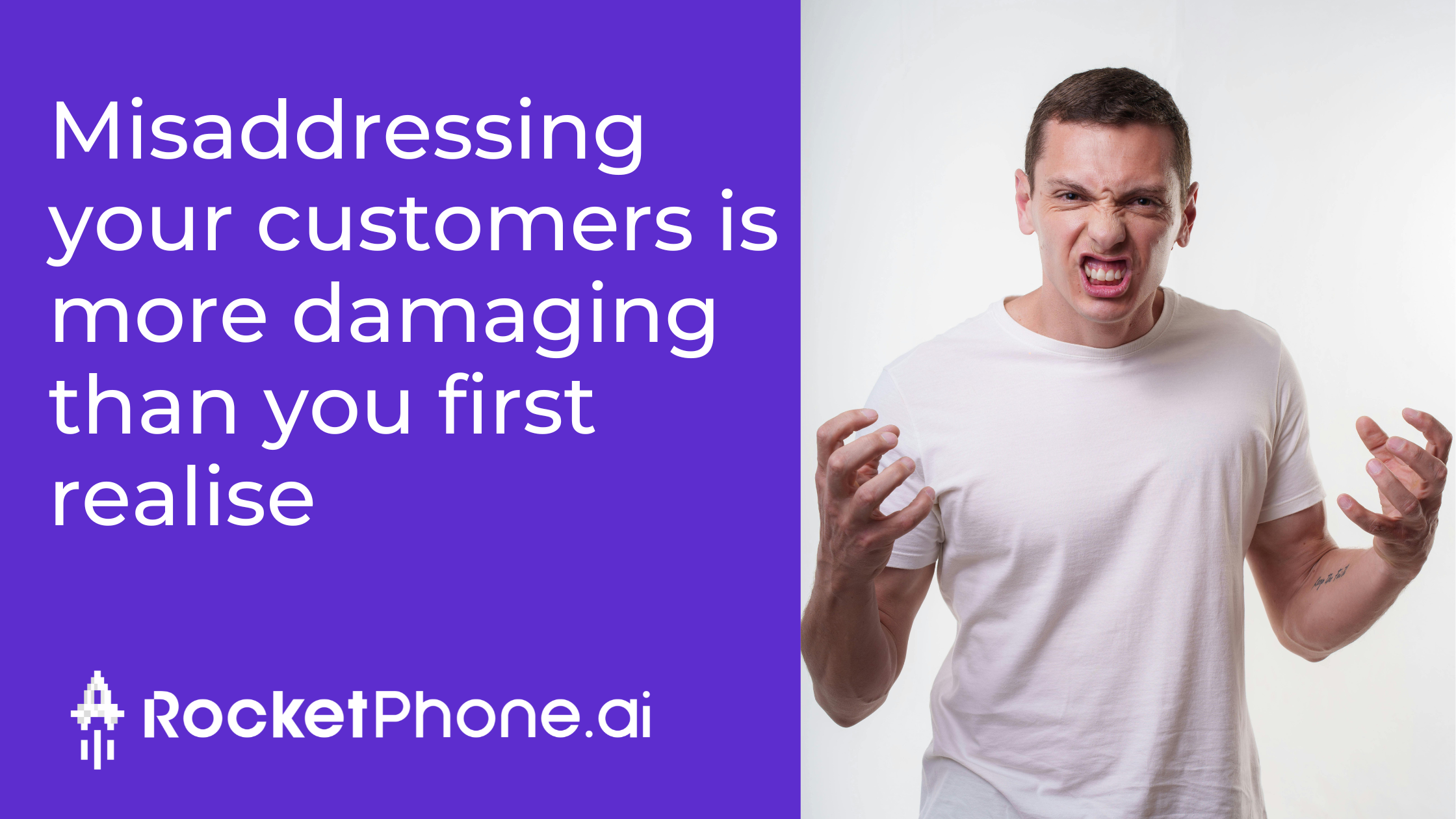
Salesforce Ben Demo Jam Winners 2025! - Watch Announcement

by
October 16, 2025
In sales, first impressions are everything, and nothing damages them faster than getting the prospect’s details wrong. Whether it’s a mispronounced name, the incorrect company, or a mismatched record, these slip-ups are more common than you might initially realise. Our 2025 report, ‘The £127 million sales gap', found that half of all customers (50%) are misaddressed by sales reps. A seemingly insignificant error in judgment could result in the loss of customer relationships, client trust, and the capacity to turn conversations into tangible outcomes.
These little mistakes indicate a bigger issue for sales teams who rely on accurate data to establish rapport and close deals: the friction brought about by manual data entry, disjointed systems, and incomplete customer records. Every subsequent communication is based on shaky foundations when the data in Salesforce or any CRM lacks reliability.
Why do these errors keep happening?
Most mistakes trace back to where the details first came from - the initial customer conversation. Across many businesses, the details exchanged between customer and agent are entered manually into Salesforce. In a high-pressure sales environment, this process leaves a lot of room for error, especially as information is often uploaded after time has passed. A name might be mistyped, an address missed off, or a note left unfinished before the next call begins.
A large part of the issue boils down to how people communicate and how information flows through a business. Too often, not every piece of customer insight is filled in a CRM field, and valuable details are often shared off the record. A customer might mention a last-minute change or confirm something right at the end of a meeting, but if that information is not recorded straight away, it can easily be overlooked. These small gaps can distort the overall picture of the customer, making future conversations less personal and, in turn, less effective over time.
This gap widens further when different teams, such as sales, support, and service departments, maintain their own siloed records, making the discrepancies impossible to track. Without a shared system to align everything in one place, one team may use outdated or incorrect details while another works from more recent information. This lack of cohesion leads to internal confusion and reduces the quality of every customer interaction.
Why this matters more than you think
Addressing someone incorrectly might seem trivial, but for customers, it undermines the credibility of the business and its sales team. Customer trust once gone is hard to win back, especially in a competitive market where every touchpoint matters.
There’s also the issue of compliance risk. In sectors with complicated regulations, such as finance, insurance, or healthcare, inaccurate information can easily lead to confusion or potential breaches. Businesses must now prove they understand and act on customer data consistently, but that becomes impossible if the data itself can’t be relied on.
Then finally, there’s the productivity cost. Fixing errors takes time. That’s time taken away from building connections, nurturing leads, and closing deals. Multiply that across an entire team, and the cost becomes far more substantial.
How AI can set new standards
The answer isn’t to ask teams to spend more time typing notes, it’s to remove manual data entry altogether. This is where AI-powered conversation intelligence comes into its own.
By analysing and capturing every conversation in real time, AI can ensure that each customer detail is recorded accurately and automatically in Salesforce. Imagine a sales call where the system listens, transcribes, and updates relevant fields and forms as the conversation happens in real-time. Instead of relying on memory or scribbled notes, every detail is captured correctly the first go without any human input.
This doesn’t just eliminate errors, it transforms Salesforce from a static database into a living, breathing reflection of customer interactions. In doing so, AI can surface opportunities for upselling or cross-selling automatically, compliance risks are spotted early, and teams can act on insights immediately rather than after the fact.
Building better conversations from here
The first step here is to treat every customer interaction as the sole source of truth and not just a box-checking activity. Accurately recording and sharing customer and prospect records throughout the company gives teams the clarity and confidence they need to respond quickly, maintain compliance, and provide each and every customer with an excellent experience.
We set out to build the best phone system on the planet and ended up building the best in the universe 🚀
